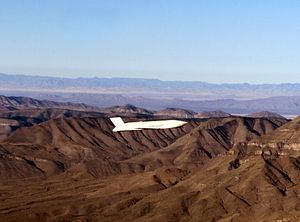Japan’s Ministry of Defense (MoD) confirmed on December 8 that it will earmark funds for new long-range stand-off missiles in the defense budget for the next fiscal year, which commences in April 2018.
“We are planning to introduce the JSM (Joint Strike Missile) that will be mounted on the F-35A (stealth fighter) as ‘stand-off’ missiles that can be fired beyond the range of enemy threats,” Japan’s Defense Minister Itsunori Onodera said at a December 8 news conference in Tokyo.
Onodera also confirmed that the ministry seeks to allocate funds to study the feasibility of arming Japan Air Self-Defense Force (JASDF) Mitsubishi F-15J all-weather air superiority fighters with the U.S.-made extended-range Joint Air to Surface Standoff Missile Extended-Range (JASSM-ER).
“We will implement stand-off missiles capable of defending ourselves adequately, when we are outside the range of the opponent, in order to ensure the safety of the Self Defense Force and to defend our nation effectively,” Onodera added.
While the Japanese defense minister did not mention North Korea by name, Onodera said that Japan’s increasingly “severe national security situation” mandates the acquisition of long-range missiles.
However, Japan’s defense minister was adamant that the possible acquisition of new missiles does not constitute a change in of defensive military posture reiterating earlier statements on the subject.
“As the stand-off missiles will be introduced exclusively for the purpose of defending Japan, they are not intended for the so-called enemy base attack,” Onodera said. “As for the so-called enemy base attack capability, Japan depends on the United States under the division of roles between the two countries, and we are not considering changing the basic division of the roles.”
Still, the move is likely to face scrutiny in Japan’s parliament.
The Japan Self-Defense Force (JSDF) currently operates missiles with ranges of less than 300 kilometers (186 miles).
Lockheed Martin’s JASSM-ER, a long-range, radar-evading cruise missile “designed to destroy hostile air defenses and high value, well defended, fixed and relocatable targets while keeping aircraft safely out of range from hostile air defense systems,” as I explained elsewhere, is armed with a penetrator/blast fragmentation warhead and can destroy targets at a distance of up to 1,000 kilometers (620 miles).
The next-generation, long-range, precision-guided Joint Strike Missile (JSM), originally developed as an anti-ship missile, has a shorter range of around 500 kilometers (310 miles).
“The JSM, co-developed by U.S. defense contractor Raytheon and Norwegian defense company Kongsberg Gruppen, is a fifth-generation cruise missile specifically designed to fit inside the F-35A’s weapons bay to maintain the aircraft’s stealth capabilities,” I explained previously. The new missile is expected to become operational in 2025.
Japan’s first line of defense against North Korean ballistic missiles is its six Aegis-equipped fleet of guided-missile destroyers. According to Japan’s defense minister, the new missiles would specifically be purchased to defend these ships.
“Currently, while the importance of Aegis-equipped destroyers that defend Japan against North Korean ballistic missiles is growing, it is essential to introduce stand-off missiles in order to protect the destroyers from outside enemies’ threat range,” Onodera said. “It is the government’s responsibility to introduce appropriate equipment so that SDF personnel engaging in the defense of Japan can perform tasks more safely, so it is necessary to introduce these missiles.”































